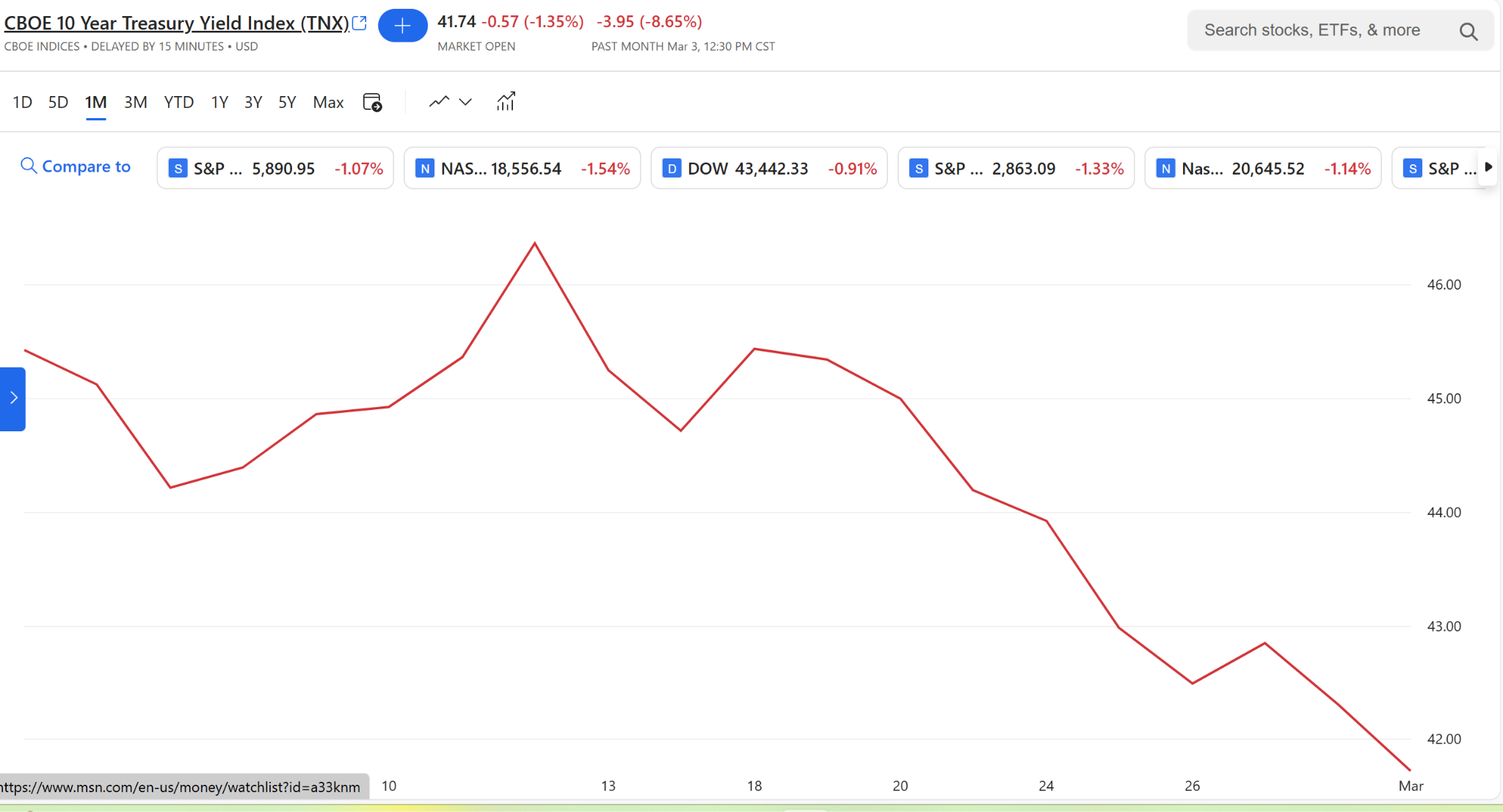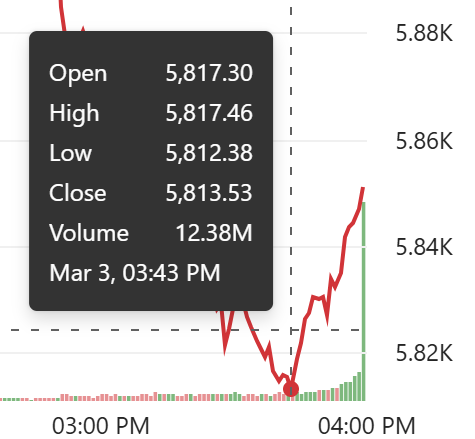FOMO’s Flash in the Pan: Early Trading Rally Fizzles as Weak Data Takes Over
In the first 30 minutes of trading today, markets experienced a brief surge that can only be described as a textbook FOMO bounce—I told you they would show up. If only FOMO paid dividends. Traders, caught up in an early morning adrenaline rush, piled into positions as if the market offered Black Friday stock deals. Prices leaped upward in a frenzy that would have impressed even the most daring day trader.
However, the exuberance was as fleeting as a summer romance. Almost as quickly as the buying spree began, a spate of underwhelming economic reports arrived to shatter the party. Key indicators, including the much-anticipated ISM manufacturing data and other economic snapshots, painted a picture far less bullish than the premarket optimism had suggested.
The economic reports revealed a contraction in new orders and a deceleration in production—details that left traders realizing their rush had been nothing more than a temporary mirage. Once the weak data hit the trading screens, the initial buyers, no longer buoyed by irrational hope, began selling off their positions, turning that once-roaring rally into a tepid, profit-taking retreat.
It seems that while FOMO can ignite a short-term spike in prices, the sober reality of economic fundamentals isn’t easily ignored—even by those who initially prefer to trade on impulse. The early bounce, driven by a collective dash to “get in while it’s hot,” quickly dissolved into a selling session as the market recalibrated to a less-than-stellar economic outlook.
In today’s market, the fleeting thrill of a FOMO-fueled rally served as a reminder that true market strength is measured not by momentary hype but by solid economic data. As the early gains evaporated under the weight of disappointing reports, investors were left to wonder if their FOMO might have been better spent on a good cup of coffee than chasing an illusory rally.
This morning’s episode is a cautionary tale: in the market, as in life, sometimes the things that shine the brightest are the quickest to fade.
Today’s ISM manufacturing report reveals that the main weakness is coming from a significant drop in new orders along with rising input prices that are pressuring manufacturers’ margins. Here’s a detailed breakdown:
Contraction in New Orders
- New Orders Index Falls: The report shows that the New Orders Index has slipped into contraction territory—dropping to 48.6 compared to a strong recovery in previous months. This indicates that manufacturers are receiving fewer orders, which is a direct signal of weakening future demand.
- Implication for Production: With fewer orders on the horizon, production levels are expected to slow further. This drop is an early warning sign that manufacturers are bracing for a potential slowdown in the sector.
Tariff Uncertainty and Its Impact (this has the market handcuffed)
- Tariff-Driven Caution: Panelists have cited the uncertainty surrounding upcoming tariffs—especially those being discussed by President Trump on imports from Canada, Mexico, and even China—as a major factor behind the hesitation to place new orders. The “wait-and-see” attitude is causing customers to hold back on their purchasing decisions.
- Supply Chain Pressures: This uncertainty not only affects new orders but also disrupts supply chains, causing delays in supplier deliveries and contributing to overall market unease.
Rising Input Costs
- Spike in the Prices Index: The Prices Index has surged to 62.4—the highest in over two and a half years—indicating that manufacturers are facing sharply higher costs for raw materials and supplies.
- Margin Compression: These rising input costs are squeezing profit margins, prompting manufacturers to be more cautious with their production and staffing decisions.
Other Contributing Factors
- Production and Employment: Alongside the drop in new orders, production growth has slowed (with the Production Index declining from 52.5 to 50.7), and employment figures have also dropped into contraction territory (falling to 47.6). Both are reflective of the cautious stance adopted by manufacturers amid weak demand and rising costs.
Conclusion
Overall, the report underscores that while the manufacturing sector is still technically expanding, the underlying weakness is driven by a contraction in new orders compounded by tariff-related uncertainty and rising costs. These factors are leading companies to pull back on production and hiring, which could signal a more prolonged period of subdued growth if the uncertainty isn’t resolved soon.
Final Thought
I’ve been saying for months—take money off the table. The uncertainty in Washington is keeping the smart money on the sidelines, and they’re piling into the 10-year Treasury, exactly as I predicted a month ago. (See the attached 30-day chart.)

Remember, buying in bonds sends rates lower. That is why this chart has a major downward slope.
Recent Stock Updates
Regarding the recent stock updates: The future looks bright for the two I updated. Today’s crypto announcements should fuel one of the stocks I updated once the market settles down. I hope to add to that position in the future.
The other stock update, for every day the 10-year Treasury falls, brings us closer to a situation their business model would like. I anticipate credit spreads to narrow later this year. In this market, very little is moving higher, so I’m also looking to add to that position—again, maybe not at this moment. And if tariffs go into effect, this stock might falter further initially, but I believe it will blossom later. My logic is simple: tariffs will force the Fed to remain sidelined initially, BUT the economy will falter (for numerous reasons), and then the Fed will swoop in sooner than many expect, like Superman, cutting interest rates and spurring a market rally. A certain real possibility. And if that happens, expect another…
I told you so.
For now, expect more of the same to come. I noticed the FOMO money was buyers again right before the close. Below is a chart of the S&P 500 and the last 17 minutes of trading.

Don’t get caught up in the FOMO. I’ve been saying for months—wait for Washington to set policy and then step in at a far better entry point. The smart money has been quietly exiting this party over the past month as the 10-year Treasury continues its steady move lower, exactly as I predicted. FOMO eventually will run out of cash, and you certainly don’t want to be left at this party when that happens. Instead, join “the smart money” party later on. You want to be ready with funds (I’ve been saying take profits for weeks) to join the next party—the one where the smart money will be celebrating. The smart money parties are much better. Tell your friends. “I told you so.”

